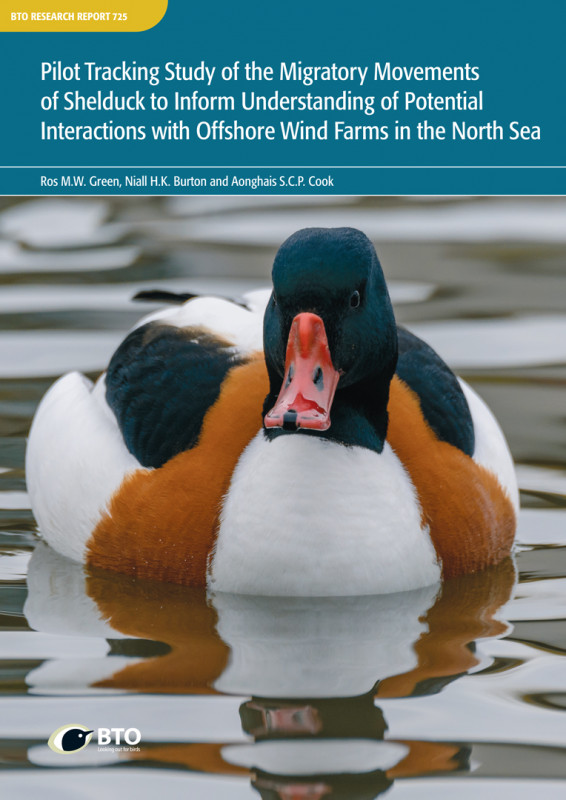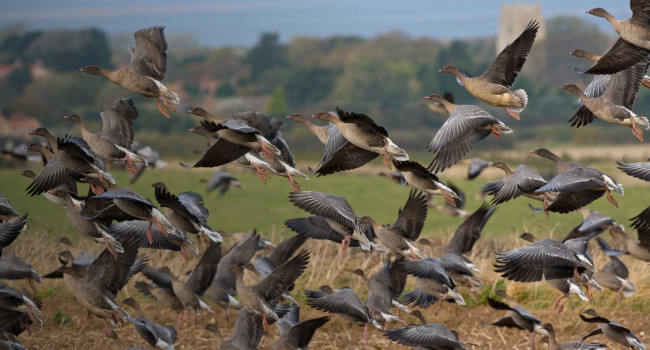Pilot Tracking Study of the Migratory Movements of Shelduck to Inform Understanding of Potential Interactions with Offshore Wind Farms in the North Sea
Author(s): Green, R.M.W., Burton, N.H.K. & Cook, A.S.C.P.
Published: April 2020 Issue No.: 725
Publisher: British Trust for Ornithology Pages: 54pp
ISBN: 978-1-912642-19-9
Download article 5.08 MB application/pdf
Abstract
1. Following a review of current knowledge of the migratory movements of British and Irish Shelduck Tadorna tadorna in relation to the potential risks to the species associated with offshore wind farms (Green et al., 2019), a pilot tracking study was commissioned by the Department for Business, Energy and Industrial Strategy (BEIS)’s Offshore Energy Strategic Environmental Assessment programme.
2. The objectives of the study were to catch and tag 10 Shelduck immediately preceding their departure on moult-migration across the North Sea in order to:
(i) Provide data to assess the routes and timing of movements of Shelduck during the early summer period on their migration between the UK and moulting sites in the Dutch/German Wadden Sea;
(ii) Provide data to assess the flight height and flight speed during these movements;
(iii) Assess potential connectivity with offshore wind farms (OWFs) within the southern North Sea during these movements; and
(iv) Assess suitable methodologies for a wider study, and tag performance.
3. In total, four adult Shelduck (two male and two female) were caught at the Alde-Ore Estuary Special Protection Area (SPA) in July 2019 and fitted with KITE BB 2S GPS-GSM tags manufactured by Ecotone Telemetry. All four subsequently migrated across the North Sea, initially to the Dutch Wadden Sea, with further onward movements to the German Bight shown by three individuals. Details of the birds’ migration routes and data on flight timings, height and speed are presented. Only one data point occurred within an operational offshore wind farm, although other data points were recorded within planned offshore wind farms and an offshore wind farm under construction.
4. Conclusions on the success of the pilot study are presented and recommendations are provided on field methods, data analyses and the potential objectives and options for a future study that might build on the pilot.









Share this page